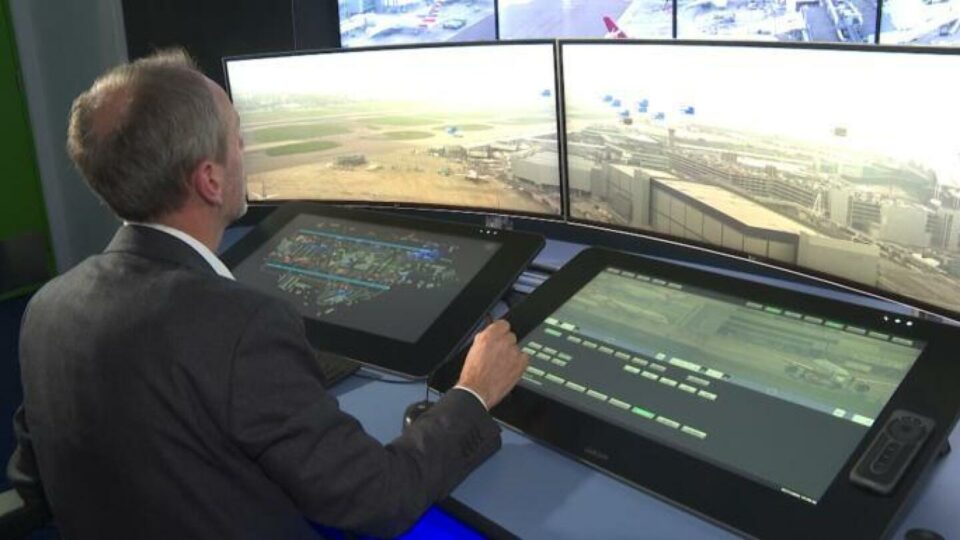As AI technology continues to evolve, its application in air traffic control is expected to become more sophisticated, paving the way for a more efficient and safer air travel experience in the future.
“`html
Revolutionizing Air Travel: Heathrow Airport Unleashes AI Technology to Transform Air Traffic Control
The Need for Advanced Air Traffic Control Systems
As one of the busiest airports in the world, Heathrow Airport is continually facing challenges associated with air traffic management. With increasing passenger volume and flight operations, traditional air traffic control systems often struggle to maintain efficiency and safety. High delay rates, unpredictable weather, and complex flight patterns necessitate a more advanced approach to air traffic management. This is where AI technology comes into play.
AI Technology: A Game Changer for Air Traffic Control
Artificial Intelligence (AI) refers to the simulation of human intelligence processes by machines, especially computer systems. In the context of air traffic control, AI applications involve data collection and analysis, decision-making, and real-time problem-solving. Here’s how Heathrow is integrating AI into its operations:
- Predictive Analytics: AI algorithms analyze historical flight patterns and current data to predict potential delays.
- Real-time Monitoring: AI systems continuously monitor weather conditions, air traffic, and other variables affecting flight schedules.
- Automated Decision-Making: AI can automate routine tasks, allowing human controllers to focus on more complex decisions.
Benefits of Implementing AI in Air Traffic Control
Integrating AI technology in air traffic management not only enhances operational efficiency but also greatly improves the passenger experience. Here are some key benefits:
1. Increased Safety
- AI systems can process vast amounts of data in real-time, identifying potential safety issues before they become critical.
- By reducing human error through automation, safety standards are elevated within the control tower.
2. Enhanced Efficiency
- AI helps optimize flight path planning, reducing fuel consumption and lowering carbon emissions.
- Streamlined operations decrease ground and air delays, leading to increased on-time departures.
3. Improved Passenger Experience
- Fewer delays and improved scheduling lead to more reliable travel experiences for passengers.
- Data-driven insights can be used to enhance services in real-time, such as providing passengers with timely flight updates.
How AI is Being Implemented at Heathrow Airport
Case Studies of AI Applications
Several pilot programs at Heathrow are showcasing the transformative power of AI technology:
| Project Name | Description | Status |
|---|---|---|
| AI Flight Monitoring | Real-time analysis of flight data to predict and mitigate delays. | Ongoing |
| Predictive Weather Modeling | Using AI to anticipate and prepare for adverse weather conditions. | Completed |
| Smart Taxiing Systems | Automated recommendations for optimal taxi routes to decrease ground delays. | In Development |
First-Hand Experiences: Controller Testimonials
Air traffic controllers at Heathrow have shared their experiences with AI technology:
“The AI systems have significantly alleviated the pressure of decision-making during busy periods. With real-time data at our fingertips, we can focus on safety and efficiency more than ever before.” - ATC Supervisor
“AI allows us to see patterns in flight data that we would have missed otherwise. It’s like having a co-pilot who never tires.” – Senior Air Traffic Controller
Challenges in AI Adoption for Air Traffic Management
While the benefits are substantial, implementing AI in air traffic control is not without its challenges:
- Integration with Existing Systems: Merging AI solutions with traditional systems can pose technical challenges.
- Data Security Concerns: With increased data usage
Enhancing Airport Operations: A New Technological Approach
Innovative technology is being introduced to significantly enhance the efficiency and safety of managing the high volume of air traffic at airports. This system is engineered to operate in synergy with human air traffic controllers, facilitating more effective decision-making concerning both ground and airborne aircraft movements. (AP video featuring Mustakim Hasnath)
The Role of Technology in Air Traffic Management
As air travel continues to grow, the challenge of maintaining smooth and safe operations becomes increasingly complex. The integration of advanced technological solutions aims not only to support but also to optimize the workflow for those overseeing aircraft movements. This collaboration between human expertise and machine intelligence promises a revolutionized approach to handling busy flight schedules.
A Collaborative Future for Human Controllers
The innovative tools designed for this initiative seek to empower air traffic controllers by providing real-time data analysis and insights that aid them in making informed decisions swiftly. By using augmented systems that contribute vital information, controllers can concentrate on strategic oversight while minimizing operational risks associated with high-density flight patterns.
these advancements signal a transformational period in airport management, where technology paves the way for increased operational capacity without compromising safety standards.


